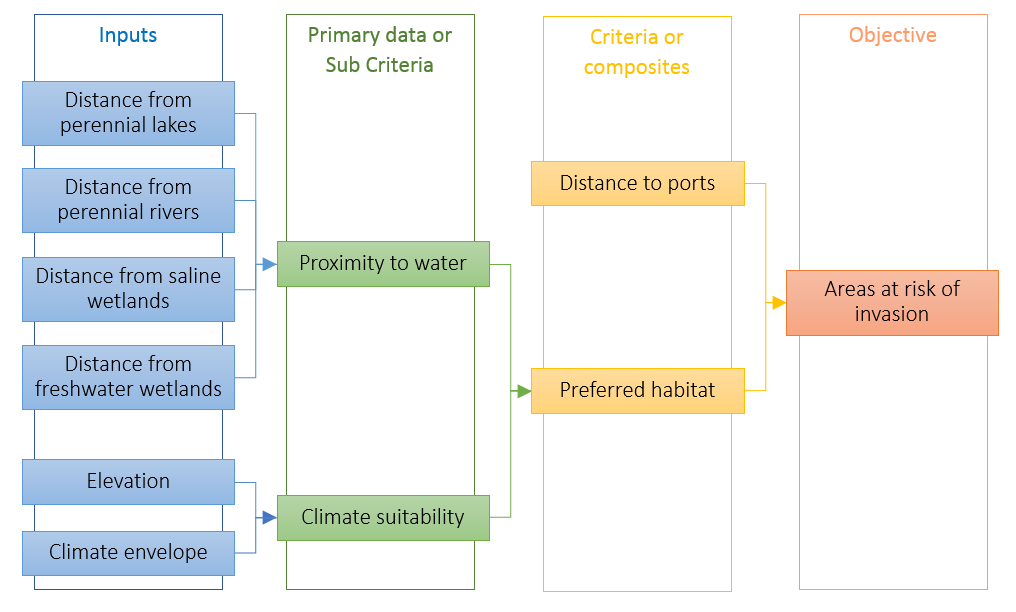The Problem
MCAS-S can assist in tracking the spread and increasing the effectiveness of control methods for invasive species. This guide is based on a simplified scenario of predicting the spread of a hypothetical invasive aquatic species across Australia.
If you have not already downloaded the template project or sample data and would like to follow along, it can be found in the Quick start guide.
Defining the Objective and Decision Criteria
For the purpose of this exercise, we have made some assumptions concerning the example species: "Dermatemys Exampilius"
- It is a species of aquatic turtle.
- The common method of arrival in Australia can be traced back to ports.
- We have data outlining the climate envelope of the species.
- The turtle cannot survive in high altitude environments.
In order to assess areas of possible establishment for the species across Australia, multiple criteria must be taken into account. In reality, many other criterion could be considered after consultation with a range of experts and stakeholders, the following are selected as a simple illustration:
- Known presence: Data on where the species currently exists in Australia
- Preferred habitat: The most suitable environments in which the species can live, based on a composition of climate data and proximity to bodies of water.
- Proximity to ports: Distance from most likely entry point into Australia
The project template includes basic data on the locations of water bodies, locations of ports, the species' climate envelope and land elevation data.
Using this data as input, a means-to-an-end diagram can be constructed as follows:

A means to an end diagram provides a structure to follow in creating an MCAS-S project. This process will also help to match the spatial and temporal scale of the input information and analysis to the objective.
